
Stem rust, also known as cereal rust, black rust, red rust or red dust, is caused by the fungus Puccinia graminis, which causes significant disease in cereal crops. Crop species that are affected by the disease include bread wheat, durum wheat, barley and triticale. These diseases have affected cereal farming throughout history. The annual recurrence of stem rust of wheat in North Indian plains was discovered by K.C. Mehta. Since the 1950s, wheat strains bred to be resistant to stem rust have become available. Fungicides effective against stem rust are available as well.
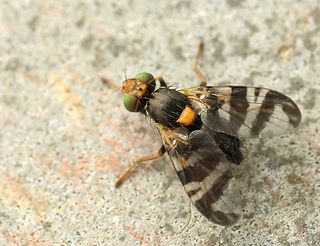
Rhagoletis is a genus of tephritid fruit flies with about 70 species.
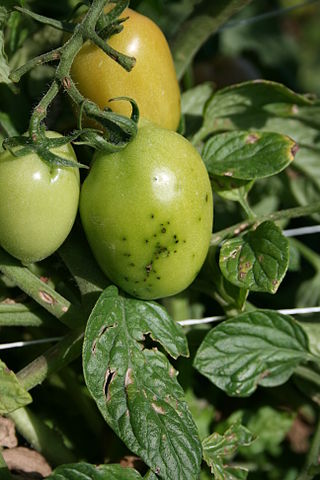
"Pseudomonas tomato" is a Gram-negative plant pathogenic bacterium that infects a variety of plants. It was once considered a pathovar of Pseudomonas syringae, but following DNA-relatedness studies, it was recognized as a separate species and several other former P. syringae pathovars were incorporated into it. Since no official name has yet been given, it is referred to by the epithet 'Pseudomonas tomato' .

Hazardia is a small genus of North American flowering plants in the family Asteraceae. Plants in this genus may be called bristleweeds or goldenbushes.

Rhagoletis cerasi is a species of fruit fly in the family Tephritidae.

Rhagoletis berberidis is an insect species of tephritid or fruit flies in the genus Rhagoletis of the family Tephritidae.
Curreya is a genus of fungi in the family Cucurbitariaceae.
Massaria is a genus of fungi in the family Massariaceae.

Hypoderma is a genus of fungi within the Rhytismataceae family. According to a 2008 estimate, the genus contains 54 species.
Lambertella is a genus of fungi in the family Rutstroemiaceae.

Melanopsamma is a genus of fungi within the Niessliaceae family. The genus contains 41 species.

Capnodium is a genus of sooty molds in the family Capnodiaceae. It was circumscribed in 1849 by French mycologist Camille Montagne with Capnodium salicinum as the type species.
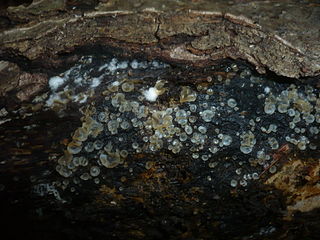
Hyalorbilia is a genus comprising 10 species of fungi in the family Orbiliaceae. The genus was circumscribed in 2000.

Trichoferus is a genus of long-horned beetles in the family Cerambycidae. There are at least 20 described species in Trichoferus.
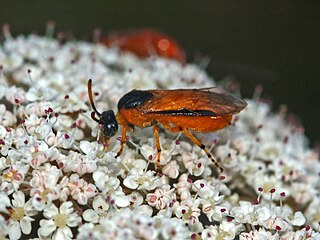
Arge is a genus of sawflies belonging to the family Argidae subfamily Arginae.
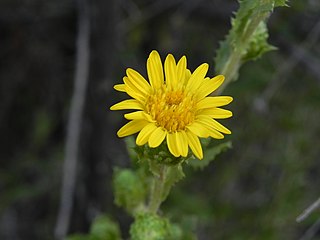
Hazardia berberidis is a species of flowering plant in the family Asteraceae commonly known as the barberry-leaf goldenbush. A woody shrub, it is characterized by sawtooth leaves and yellow ray flowers that bloom from March to August. It is endemic to the coastal sage scrub and coastal succulent scrub habitats of Baja California, Mexico, but with populations of uncertain origin in San Diego County, California.
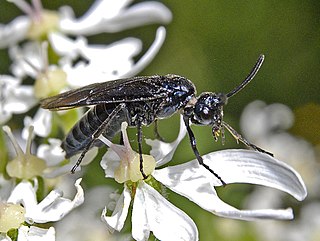
Arge berberidis, common name berberis sawfly, is a species of sawflies belonging to the family Argidae subfamily Arginae.
The barberry miner bee is a species of miner bee in the family Andrenidae. It is found in North America.
Kabatiella is a genus of fungi belonging to the family Saccotheciaceae.
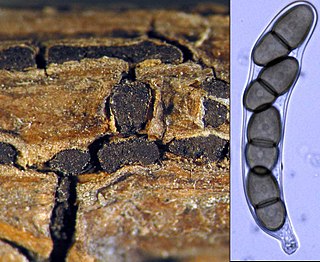
Dothidea is a genus of fungi belonging to the family Dothideaceae. The genus was first described in 1818 by Elias Magnus Fries. The type species is Dothidea sambuci.













